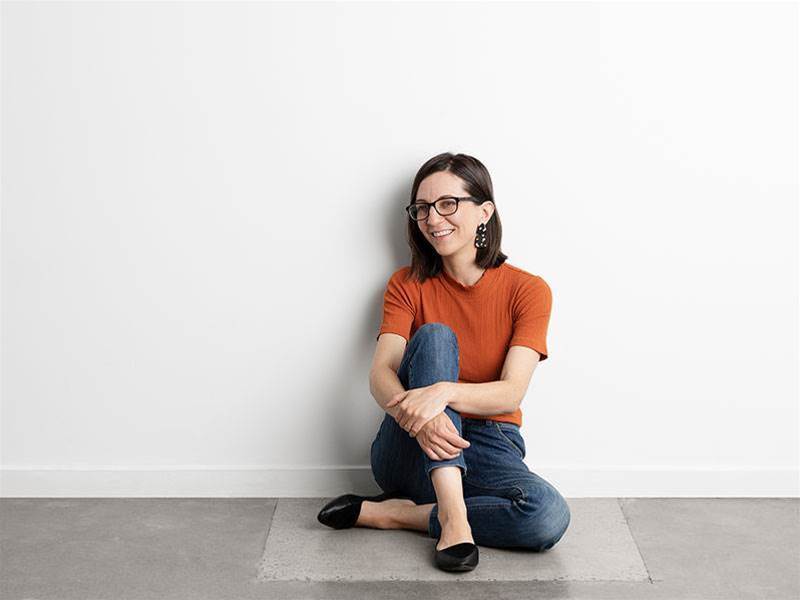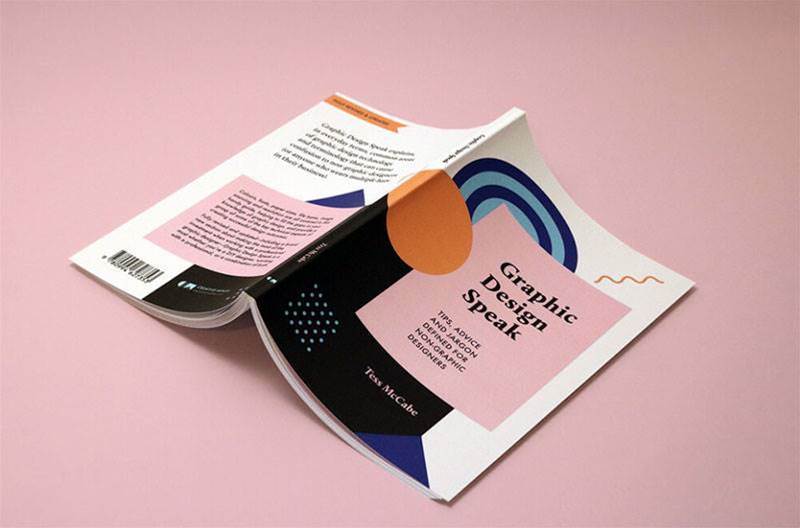a few tips for designing your own logo
Graphic design pro Tess McCabe gives us the lowdown on what to consider when creating a logo.
Just like rocking up to an important meeting in your nicest duds, arming yourself with a rad logo is all part and parcel of making a good first impression. A logo can say a lot about you and your brand in the blink of an eye, and while this might make creating one seem a bit daunting, design extraordinaire and author of Graphic Design Speak, Tess McCabe, is here to tell you that YOU CAN DO THIS! Whether you’re keen to come up with your own logo or want to get a graphic designer to help you out, here are Tess’s tips for getting started. (A note from frankie: We've also curated a bunch of ace logo examples below to get you inspired.) BE CLEAR ON WHAT YOUR BUSINESS IS ABOUT Before starting your branding, you need to have a good idea of what your business is about and who your core customer is. How is your product or service fulfilling a need? How is what you’re doing different to your competitors? Who is your customer, and how do they live their lives? Knowing the ‘why’ of your business will help you understand and plan how you market your product or services to the world, which in turn will influence what you need in terms of branding. A logo is just one part of your business branding. Once you have these ideas figured out, you’ll have a solid foundation on which to design your logo.
BE CLEAR ON WHAT YOUR BUSINESS IS ABOUT Before starting your branding, you need to have a good idea of what your business is about and who your core customer is. How is your product or service fulfilling a need? How is what you’re doing different to your competitors? Who is your customer, and how do they live their lives? Knowing the ‘why’ of your business will help you understand and plan how you market your product or services to the world, which in turn will influence what you need in terms of branding. A logo is just one part of your business branding. Once you have these ideas figured out, you’ll have a solid foundation on which to design your logo.
KNOW THE BASICS OF A GOOD LOGO A good logo should be recognisable, memorable, adjustable, versatile and make sense in the context of what your business provides. It should also be part of a wider visual language – from photography to packaging to written tone of voice – that speaks about your brand to the target customer.
DO YOUR RESEARCH You probably have an idea of how your competitors brand themselves. While you don’t want to be a copycat, it’s good to understand other brands in your corner of the market. Have a good look at their approach: what are their shared qualities? Pay attention to their typeface (font), colour palette, image style, logo shape and symbols, too.
MAKE A MOODBOARD You might have a few different ideas or visual directions for your branding already. Try creating a moodboard to help distil the ideas into categories of look and feel. To collect inspiration, I go to all the usual places: design books, magazines, blogs, Pinterest and Instagram. With that said, just the act of getting away from lots of visual stimuli can spark a worthy idea.
GET YOUR THINKING CAP ON Hop in the shower or go for a walk (or do whatever it is that clears your mind). I like to start by thinking of symbols or icons around the business name, its ethos, and the main product/service. I also think about the letters that make up the business name and whether there are any elements that can be tweaked or shaped to make the message of the business stand out. (Some design jargon for you: a logo that's just the business name in a specific typeface, with some kind of visual tweak to the letters, is called a 'word mark').
PAY CLOSE ATTENTION TO TYPE There are a few important things to note when choosing a typeface for a logo. One: all typefaces have personalities. Some are easy-going, some are traditional or classic, some are fun, new or modern and some are naff (typefaces have a habit of going in and out of fashion). Choose one that works with the personality of your brand and remember that less is more, so try not to use more than two fonts. Two: don’t choose a typeface that’s too close to a competitor’s. Paired with a similar colour, you could land in hot water when it comes to trademarking or misleading conduct. Finally, watch your kerning! Kerning is the amount of space between each letter – it can make a world of difference to how your business name is read and perceived. No one wants to end up like this poor video shop.
BE WARY OF FREE FONTS All fonts come with licences, and almost all fonts that you pay for will come with a commercial licence. This means you can use it for your logo and even trademark that logo if you wish. Just be wary of ‘free’ fonts, as many will state that the font is for personal use only.
TRANSLATE YOUR SKETCH TO DIGITAL Most people use Adobe Illustrator to make their logo, but if you’re not super design savvy, you might also find Canva helpful – it’s a free graphic design website that lets you drag and drop elements. The downside is that Canva doesn’t support vector formats (though you can still create a relatively high-resolution file).
The reason you want to use a vector-based program like Adobe Illustrator is because vector illustrations can scale to any size without losing quality. This is important if your business has the opportunity to brand a Zeppelin one day. (In all seriousness, it’s important to maintain the quality and technical integrity of your logo moving forward. Vector files allow you to blow your logo up to the size of a billboard and remain crisp.) DON’T BE AFRAID TO FIND A PRO Getting your branding right is an important investment in your business’s success, but can be really tricky to do yourself when you’re already doing a thousand and one other things to keep your business going.
DON’T BE AFRAID TO FIND A PRO Getting your branding right is an important investment in your business’s success, but can be really tricky to do yourself when you’re already doing a thousand and one other things to keep your business going.
When you find a designer whose work you like, you’ll want to provide them with some information about your business and its goals, a complete list of things you want designed, and ideally, a ballpark figure of your budget.
A good designer will provide you with an itemised quote for creating your bespoke design solution and they should also offer you a project timeline and information around copyright ownership of the final design. Once completed, the designer should give you your logo in a variety of file formats to use on your signage, packaging and on the myriad social media platforms your business will encounter over its lifetime.
HELPFUL LINKS
Colour Lovers – inspiration for branding colour palettes
My Fonts – all the fonts you could ever need!
Under Consideration – lots of logo design inspiration and insightful critique
Graphic Design Speak – Tess’s book filled with tips, advice and explanations for non-graphic designers

